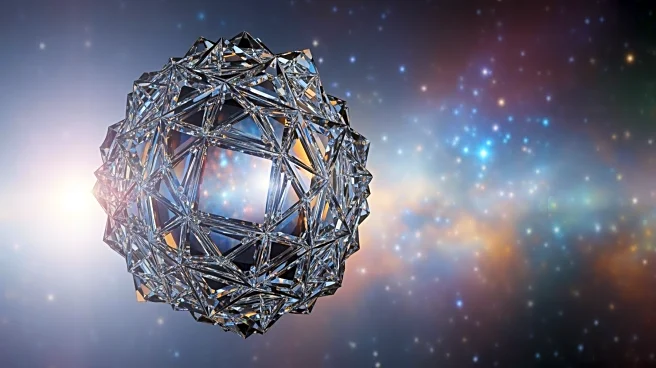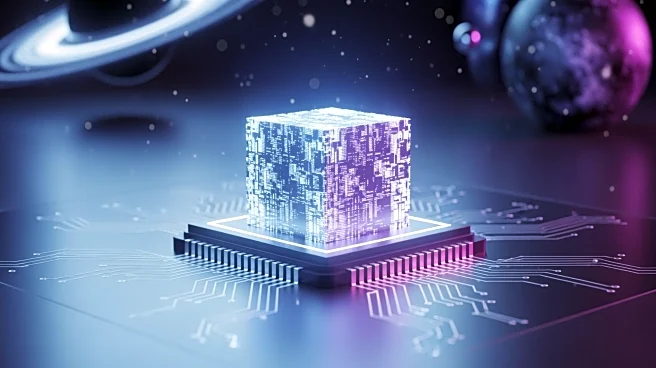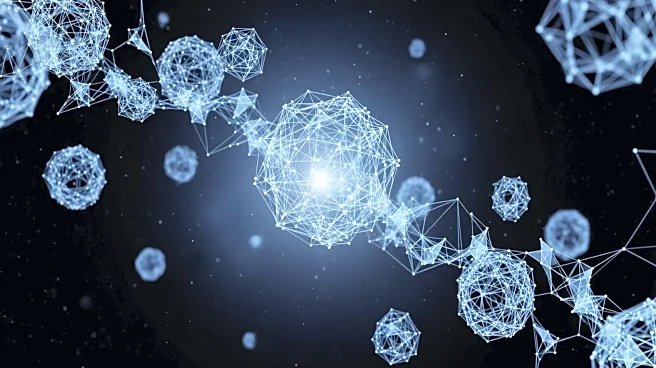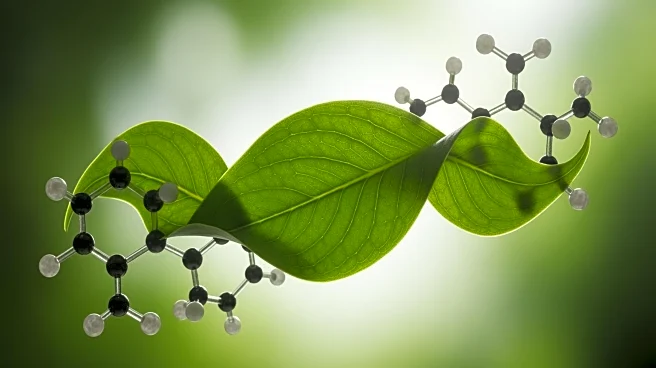What's Happening?
A team of physicists from Aachen, Düsseldorf, Mainz, and Wayne State University has discovered a new type of crystal made of rotating particles, exhibiting unusual behaviors. These crystals can split into fragments, form unique grain boundaries, and display
controllable structural defects. The study, published in the Proceedings of the National Academy of Sciences, introduces a theoretical framework predicting new properties of these 'transverse interaction' systems. The crystals demonstrate 'odd elasticity,' where instead of stretching, they twist when pulled. This behavior allows the crystals to disintegrate and reform, offering potential technological applications.
Why It's Important?
The discovery of these spinning crystals could have significant implications for materials science and engineering. Their unique properties, such as odd elasticity and the ability to self-reassemble, could lead to the development of new technical switching elements and other applications. The research highlights a fundamental property of nature, potentially influencing future studies in colloid research and biology. Understanding these interactions could pave the way for innovative materials with tailored properties, impacting various industries.
What's Next?
Researchers plan to explore further applications of these rotating crystals, particularly in technology and materials science. The study's findings may lead to advancements in creating new materials with specific properties, such as enhanced elasticity or self-repair capabilities. Continued research could uncover additional uses for these crystals, potentially revolutionizing fields like engineering and construction.
Beyond the Headlines
The discovery of transverse interactions challenges traditional views of crystal growth and material properties. This new understanding could lead to ethical considerations in the manipulation of natural systems and the development of synthetic materials. The ability to control crystal defects and properties may raise questions about the environmental impact and sustainability of such technologies.













